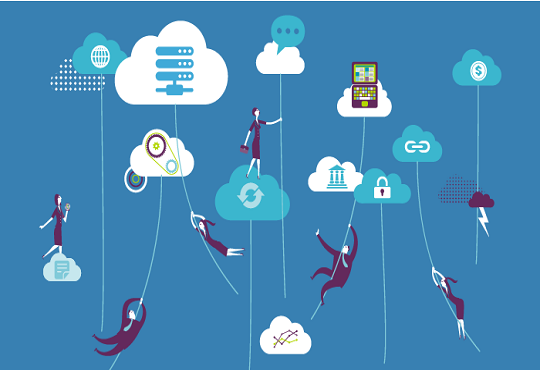How Cloud-native Platforms can Make a Difference
Abhrasnata Das | Sunday, 12 December 2021, 19:48 IST

The microservice-based cloud-native application has the potential to be the next digital disruptor, turning the concept of digital connectivity upside down. However, implementing cloud-native apps to their fullest potential necessitates a robust infrastructure for building, testing, and deploying them. Additionally, from an organizational standpoint a cloud-native platform for designing and managing services that automate and integrate DevOps, microservices, continuous delivery, and Containers will be of unmatched importance. Having said that, in this article let’s try to dig deep, into how a robust cloud-native platform can provide consistent development and automated management experience across public, private, and hybrid clouds in the coming days.
Faster integration/delivery
A company's speed of service is vital to its success in today's digital era. The more quickly a form can develop, create, and provide value to customers, the more likely it is to succeed. In the coming days, DevOps will play a crucial role, in the development, troubleshooting, and upgrading the cloud-native applications. DevOps will automate the software delivery process, whether it's building automation, testing automation, or deployment automation. And, unlike local development processes and constrained server-based software developer procedures, cloud-native apps will offer DevOps processes and automation.
Cost friendly
One of the advantages of using containers and microservices to build apps is that those pieces can later be used as building blocks for other projects. Cloud-native apps make it easier for developers to access and reuse components generated for previous projects since they are built on a Cloud-native platform. Therefore this by considerably reducing the development cost of the app will also reduce the complexity of developing an app, will simplify the testing procedure as well as enhance the UI and UX.
Improved business resiliency
According to research vice president of Gartner, Sid Nag, “ the ability to use on-demand, scalable cloud models to achieve cost efficiency and business continuity is providing the impetus for organizations to accelerate their digital business transformation plans.”
In other words, cloud-native development is more about keeping operations cheap enough to weather any market storm than it is about creating a competitive advantage. By reducing downtime and increasing resource availability, untethering employees, products, and services from physical locations, enabling integrated and automated backups, improving data security, unifying processes on a single interface, and improving visibility, cloud-native platforms can become a valuable asset for increasing business resilience.
Nullify Vendor deadlock
In today's environment of open source and cloud technologies, hybrid and multi-cloud are commonplace. An on-premise data center and at least one public cloud platform are used by businesses. Even the discussion among cloud platforms has progressed to allowing mobility between clouds. As a result, we can no longer rely on a single vendor. Businesses do not use a single infrastructure they are developing cloud-native apps that can operate without modification on any infrastructure, including public and private clouds. As a result, users may run an application on any platform without being tied to a single cloud provider.
Addressing the shifting market demand
Cloud-native solutions may provide agility and speed, making them a perfect tool for industries that are tumultuous or hypercompetitive. Whether a firm is going through a digital transition or needs new methods to communicate with consumers who don't have a physical presence, cloud-native applications will be the key to seizing unexpected possibilities. A company's capacity to respond quickly is critical.
“Cloud adoption is a significant means to stay ahead in a post-COVID-19 world focused on agility and digital touchpoints,” stated Sid Nag.
Auto-provisioning
When a Cloud-native application requires resources, it will automatically use self-service and programmatic provisioning. As a result, programmes will function more smoothly without the need for manual intervention. The cloud-native platform will provide a new runtime environment for safely, efficiently, reliably, and at scale running applications.
Challenges Ahead
The biggest problem lies in the shifting from the old structure to the new ones. The shifting of old on-premise applications to the cloud architecture will not be enough as this is not feasible as with old applications, people can't take advantage of an essential feature of cloud-native. So, instead of this, they have to create new cloud-native applications.
Secondly, the user needs to adopt new approaches, as in the coming days prevalent approaches like the waterfall model or Agile development might not be enough. With the changing time, the significance to adopt Minimal Viable Product, rapid iteration, multivariate testing, and DevOps model must be realized and implemented.
Finally, Cloud-native comes with many new concepts that can change the face of cloud-based applications like -Containerization, microservice architecture, and observability. This brings a new and improved way to design and develop the structure. Hence, businesses must be aware enough to understand and implement the same leaving the old concepts behind.
























































.jpg)
.jpg)








.jpg)

.jpg)

.jpg)
.jpg)



.jpg)


.jpg)





























.jpg)

.jpg)
.jpg)

.jpg)
.jpg)

































.jpg)

.jpg)



















.jpg)
















.jpg)












































































































